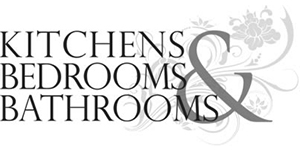Neuroaesthetics: Creating Science’s Perfect Kitchen
Wednesday, 24th January 9:22am 2024
Everyone’s analytical at times. Perhaps you follow the data at work, you compare supermarkets like a trader, or you just love to count calories to compete with the ladies at pilates. We understand. After all, social media insists we can optimise everything (hah!) – even the perfect kitchen.
Obviously, while we disagree, at Masterclass we do believe you can engineer the perfect kitchen – at least in terms of neuroscience. Indeed, according to Furniture, Lighting & Decor magazine, neuroaesthetic researchers, who study evidence-based design, have proven that design has the “ability to improve health.” In short, as one designer puts it on the Luke Edwards Interior Design blog:
“Neuro Design, when done the right way, is not a ‘trend.’”
Far from a fad, using science to design your kitchen delivers timeless benefits. But who has time to sift through research? Us! At Masterclass, we’re willing to roll up our sleeves for homeowners everywhere. So, here it is: everything you need to create the perfect kitchen, according to science.

Improve Kitchen Accessibility
Most homeowners design rooms with a bottom-up approach, shoehorning a piece of furniture they love into a space that wasn’t designed for it. Neuroaesthetic designers, however, canvas for a top-down approach, pushing first for optimal architecture, then filling the space with purpose-built items.


At Furniture, Lighting & Décor, for example, Jenny Pippin, a prominent designer based in North Carolina, reports focusing on accessibility first, ensuring they widen hallways and instal ramps to accommodate for wheelchairs or walkers before even furnishing a room.
The logic is simple: as Dr Sacha DeVelle, a principal research fellow at the Australian Council for Educational Research explains, enclosed rooms restrict mobility and “can trigger a fight or flight response.” Hence, if you want to optimise a kitchen for human brain chemistry, start with accessibility.
Pro Tip!
Want more design tips and lifestyle advice to help you make the most of your kitchen? Become a Masterclass Insider for free. You’ll get a library of virtual lifestyle guides just for subscribing.
Claim Your Welcome LibraryGrow Kitchen Plants
Once you’ve worked out if you have enough space for an island or other features, before jeopardising your mental health by creating a cramped room, next you need to consider the space’s natural elements. Indeed, utilising nature indoors is big business, and we’ve covered biophilic design in depth.

The skinny, though, is that nature-infused spaces soothe frazzled brains. As designer Nikki Hunt explains in a Lookbox Living article, “It requires more energy (requires more blood flow to the brain) to process man-made shapes […] and that’s why we find it more relaxing to look at a natural view.”
So, utilise a wooden worktop, distribute stone ornaments and hang plants in your kitchen. According to science, they improve stress levels. Just make sure you don’t overdo one element as IACP psychology experts deduce that rooms with over 45% wood surfaces “start losing their stress-busting effects.”
Incorporate Curves and Texture
Nature will only minimally improve your wellbeing if you solely incorporate squares into your kitchen design. At least, that’s the consensus from interior design researchers whose findings suggest human brains love variation. As the wellbeing consultants at Bifilco Wellness Interiors explain in a blog post:
“Studies have shown that spaces with a moderate level of visual complexity, characterized by a balance between order and variety, are perceived as more aesthetically pleasing. Such spaces engage the brain without overwhelming it, leading to increased comfort.”


It makes sense; we’re meant to feel the threads of moss beneath our feet, grasp ropes of gnarled bark and marvel at slick, frozen lakes. It makes us feel alive. And if you want to stimulate the pleasure centres of your brain to fire in the same way they do amidst these serene scenes, then you need similar variety.
Perhaps, select curved Carnegie kitchen cabinets, break up kitchen island facades with shelving or add a marbled splashback. Decorate with varied shapes and even make a display out of wonky vegetables, rather than opting for a cityscape of endless carboard packaging and plastic meal-prep boxes.
Craft Intentional Spaces
Research presented in the Colour Research & Application academic journal reaffirms colour theory: blue calms the brain; yellow energises us. Likewise, lots of studies agree that high ceilings encourage creativity while low ones stimulate focus. Yet, many homeowners continue to ignore the evidence.
Consider, however, how you could bake it into your kitchen design to serve up the kind of lifestyle you want your space to nurture. Want to be creative and energised when cooking? Go for high ceilings and warm walls. Want focus and serenity? Use low-vaulted spots and blue paint to your advantage.


Embrace all the tips in this article and you should be able to manufacture the perfect kitchen, from a neuro-design perspective. Don’t worry if you think these lessons suck all the fun out of design, though.
While theory can form an objectively good cake recipe, it’s a baker’s artistry and their clients’ preferences that choose a winner. Thus, don’t let neuroaesthetics dictate your kitchen design. Instead, let it inform you and help you create the perfect kitchen for you.
Consult a Kitchen Expert
If you need help using science to create the perfect kitchen, find your nearest showroom and book a meeting with one of our world-class consultants, or become a Masterclass Insider for free. As an Insider, you’ll get exclusive design tips, plus resources to help you cultivate habits that make your kitchen a welcoming hub for family and friends.

















